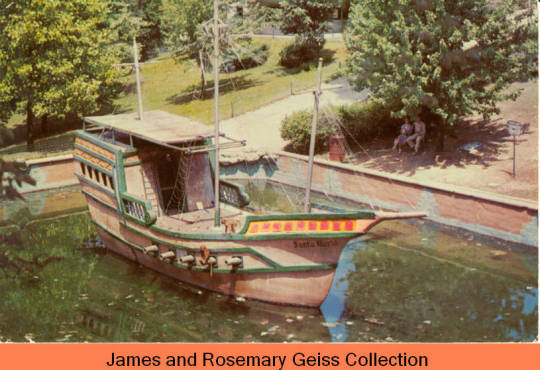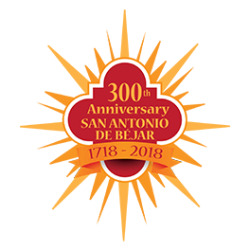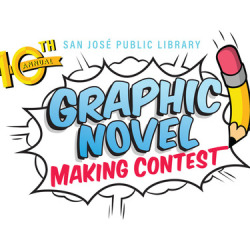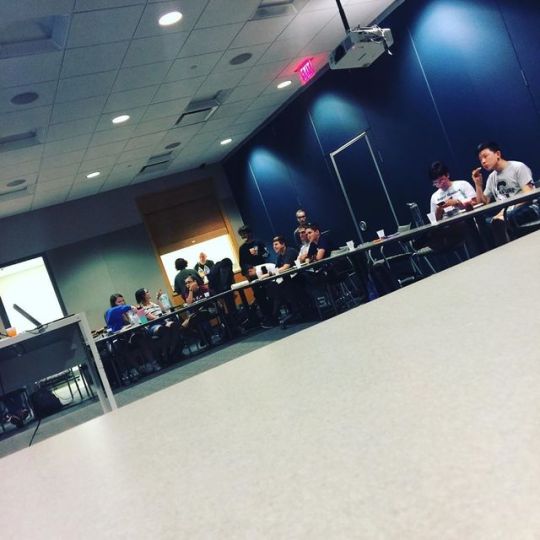#evansville vanderburgh public library
Text

Mesker Park Zoo Monkey Ship, ca. 1980s
An Ektachrome postcard of the "Santa Maria," a replica of Columbus' ship and home to the Rhesus monkeys at Mesker Park Zoo, Evansville, Indiana.
Evansville Postcards
Evansville Vanderburgh Public Library Digital Archive
#monkeys#rhesus monkeys#monkey ships#ektachrome postcards#mesker park zoo#evansville#indiana#evansville vanderburgh public library
3 notes
·
View notes
Link
Meet Jerica Copeny (@jericacopeny), civic data scientist and one of LJ's 2018 Movers & Shakers Innovators!
At EVPL, Copeny mines civic, or public, data to “uncover, investigate, and seek to understand why and how something can be better understood,” she explains. “I am also a data translator, where I bring and communicate data in formats that make them digestible to process.”
7 notes
·
View notes
Photo

Kitchen Yarns: Notes on Life, Love and Food
by Ann Hood (12/4/18)
“Hood's new book about family and home, loss and love, and food, ‘is really writing about love’, and her book is a gift of love to every reader.” - Lesa Holstine, Evansville Vanderburgh Public Library
In this warm collection of personal essays and recipes, best-selling author Ann Hood nourishes both our bodies and our souls.
From her Italian American childhood through singlehood, raising and feeding a growing family, divorce, and a new marriage to food writer Michael Ruhlman, Ann Hood has long appreciated the power of a good meal. Growing up, she tasted love in her grandmother’s tomato sauce and dreamed of her mother’s special-occasion Fancy Lady Sandwiches. Later, the kitchen became the heart of Hood’s own home. She cooked pork roast to warm her first apartment, used two cups of dried basil for her first attempt at making pesto, taught her children how to make their favorite potatoes, found hope in her daughter’s omelet after a divorce, and fell in love again—with both her husband and his foolproof chicken stock.
Hood tracks her lifelong journey in the kitchen with twenty-seven heartfelt essays, each accompanied by a recipe (or a few). In “Carbonara Quest,” searching for the perfect spaghetti helped her cope with lonely nights as a flight attendant. In the award-winning essay “The Golden Silver Palate,” she recounts the history of her fail-safe dinner party recipe for Chicken Marbella—and how it did fail her when she was falling in love. Hood’s simple, comforting recipes also include her mother’s famous meatballs, hearty Italian Beef Stew, classic Indiana Fried Chicken, the perfect grilled cheese, and a deliciously summery peach pie.
With Hood’s signature humor and tenderness, Kitchen Yarns spills tales of loss and starting from scratch, family love and feasts with friends, and how the perfect meal is one that tastes like home.
Librarians - LibraryReads votes are due by 12/1.
Request a DRC on Edelweiss or Netgalley.
"Hood’s sharp essays emphasize food as emotional nourishment, bringing family and friends together—both to celebrate the joys and to heal the wounds of life." - Publishers Weekly
"Writing a compelling food memoir is a delicate act; the recipes have to live up to the memories they evoke. In the hands of prolific author Hood (Morningstar: Growing Up with Books, 2017, etc.), the stories themselves are the main dish—but the food still has to be delicious.... A full plate of heart and hearty eats." - Kirkus Reviews
“Eminently readable, Kitchen Yarns, Ann Hood’s tender, witty, and funny voyage through a life of food, reminds us that the visceral taste memories of our past are essential benchmarks of our life, and that the stories of a family are always best felt and expressed through those dishes.” - Jacques Pépin, world-renowned chef and author of Heart & Soul in the Kitchen
2 notes
·
View notes
Link
1 note
·
View note
Text
Evansville High Schools
Evansville is a beautiful former mining town that has blossomed into a beautiful suburban community. The city is known for its rich history, spectacular attractions and beautiful scenery. The population of Evansville comprises about half of the total population of the county it covers. There are plenty of businesses and employment opportunities in Evansville. It is also a desirable place to live because of the excellent schools and recreation opportunities available there.
The Evansville Vanderburgh School Corporation serves Evansville, Indiana, and its surrounding areas. It is the third most populous school district in the state and is the eighth most populous school district in Indiana. It is located in Fort Wayne County and is served by thirty-two elementary schools, two middle schools and one high school. The City of Evansville itself is considered to be the cultural and entertainment capital of the northern part of the Midwest. The district is made up of nine counties and is bordered on the east by the Rock River and on the west by the Kentucky River.
The City of Evansville is known for its quality of education and recreational activities. It is very fortunate in that it has the facilities necessary for an advanced learning environment. It has well-experienced public administrators in key positions and it has the financial resources necessary for the support of its educational system. This combination of factors has made Evansville one of the best locations in Indiana to send students to quality private and public elementary schools.
Most of the elementary schools in Evansville have similar characteristics. They offer various types of special education and prepare students for future careers in science, technology, education and mathematics. Most of the middle schools have well-rounded curriculums. Some of them also provide preparation for college. However, some schools focus more on preparing students for kindergarten through eighth grade.
The public school system of Evansville includes three major concentrations. There are two public elementary schools and one magnet school. The public elementary schools are located in central Evansville while the magnet schools are located in the outskirts of town. All the three have a wide range of students from kindergarteners to twelfth graders. All of the middle schools also have some of the best technical programs and great career possibilities for their students.
The elementary schools are located in alphabetical order starting from the elementary k-4 school. The elementary k-5 school is the first of its kind in Evansville. It provides a solid education in both mathematics and science for the children in the kindergarten through fifth grade.
The second school is known as the St. John's Northwestern High School. This school offers a strong Christian education combined with a curriculum based on science, social studies and foreign languages. The third school is the De La Salle cathedral school. It is an accredited private school that specializes in academic and professional education for students who are at least 16 years old. The other three schools are all parochial and are located in various suburbs of Evansville. The students at these schools are admitted into the regular classrooms, but they also take advantage of the library, gymnasium and many other facilities that are found within the school.
Getting a high school diploma in Evansville is something that all students and parents can look forward to. There are a number of excellent high schools in the area including Bible Preparatory, St. John's Northwestern, Our Savior Catholic and St. Ignatius. If you are interested in applying for scholarships for high school graduates, Evansville high schools should be of particular interest to you.
0 notes
Photo

"Streets of Fire" at Central Library at 6pm. Free and open to the public! (at Evansville Vanderburgh Public Library) https://www.instagram.com/p/B8hpZ8SJsON/?igshid=tc6uvmrei4nd
0 notes
Link
With all urgency, please sign this protest because Vanderburgh Public Library in Indiana is hosting a "gender-bending" event that targets children as young as 3.
You and I must not be silent because the event:
Attacks the innocence of children
Turns the tax-dollar funded library into a place of corruption
Constitutes a new form of child abuse
Offends God Who created male and female
0 notes
Text
Our Favorite Community Projects of 2018
We wanted to take a minute to give a shout out to a few of our libraries that created some of our favorite community projects of 2018! From music to cookbooks to local history and beyond, we love seeing how they have utilized BiblioBoard’s community engagement tools to Create, Share, and Discover wonderfully unique local content. Read on to see how their collections have developed!

We Solve Problems Essay Contest
Supported by Geauga County Public Library
This essay collection gathers entries from students in seven different high schools in the area on the topic of solutions to real-world problems. The contest is made possible by a partnership between the local Gertsburg Law Firm and the Chamber of Commerce and has received a ton of local publicity!

Tricentennial Archives
Supported by BiblioTech: Bexar County’s Digital Public Library
BiblioTech is working with member partners, including the 26 suburban cities of San Antonio, to create individual digital anthologies. Together, these collections reflect and preserve the rich, diverse histories found in Bexar County. This project officially launched in 2018 to coincide with the 300th anniversary of the founding of San Antonio.

Picture Atlantic
Supported by Atlantic Public Library
Picture Atlantic is a digital photo contest to celebrate Atlantic’s Sesquicentennial Year (2018). The library collected submissions from the community for a month and organized the photos into categories for people, events, landscape/cityscape, animals, and also entries by photographers 17 and under. The photos capture unique perspectives of the town, its residents, and was a beautiful way to celebrate their 150th year.

Pocket City Music Preserve
Supported by Evansville Vanderburgh Public Library
With such a wide variety of original, quality, local music talent, EVPL invited all of their local musicians (past and present) to submit songs, band photos, album art, song lyrics, music videos, video interviews, and other music-related digital content to form this eclectic collection (and we think it’s rockin’!)

Twinsburg Library Loves to Cook
Supported by Twinsburg Public Library
This collection recognizes the timelessness of cooking by featuring recipes that have been passed down through the generations. Each collection contains cookbooks, images, and/or loose-leaf recipes. One of our favorites is from the Twinsburg Library staff and contains a full copy of the staff cookbook, published in 2015, as well as favorite recipes that are occasionally added by the current staff.

Graphic Novel Making Contest
Supported by San Jose Public Library
2018 marks the 10th Annual Graphic Novel Making Contest for San Jose Public Library. Each year, creators of all ages submit their comic/manga-style illustrated short stories to the contest as part of their Summer Learning program. Contest entries and winning submissions are featured on BiblioBoard Library for the entire community to enjoy.
Have ideas for your own community project? Get started by setting up a Custom Submission Page. It only takes a few minutes to take the first step to get unique, local content into your library!
1 note
·
View note
Text
Wikispaces: Youth Services Librarianship - Community Outreach
[By the time you see this, Wikispaces will have shut down due to financial troubles. This transcription (July 2018) is my attempt to preserve professional knowledge for the youth library field, until such a time that a new, updated resource becomes available! c: ]
What do we mean by Community Outreach?
Community outreach often refers to bringing unique library services to underserved groups, in untraditional settings outside the library. However, the language of community outreach can be imprecise. The term sometimes refers to programs and services specifically tailored for targeted populations, but offered inside the library building or through the Internet. Community outreach may focus on youth who are disabled, home-schooled, immigrants, minorities, incarcerated, pregnant or parenting, GLBTQ, and others who are not willing or able to come into the library for various reasons. Community outreach is closely linked with marketing (Pfeil, 2005), but it goes beyond making youth and their families aware of the library, to establishing community partnerships and delivering services as well. Barco listed "connecting, delivering, partnering, collaborating, teaming up, joining forces, fostering engagement" as synonyms of community outreach (Smallwood, 2010, vii).
Why community outreach is of interest to libraries?
According to the Library Bill of Rights, "...books and other library resources should be provided for the interest, information and enlightenment of all people of the community the library serves" (American Library Association, 2011, Library Bill of Rights). Especially as the population becomes more diverse, community outreach offers a way for public libraries to be more inclusive in serving all the people who live in the community. While the particular populations targeted through community outreach may sometimes be small, the individuals in these groups may have the most pressing needs, and the potential to benefit the most from library services. Community outreach also creates new library users, who pass the word onto their friends and families about library services.
History of Community Outreach in Libraries
Mobile services
Librarians have long been concerned with offering services to those not able or willing to come to the library. In 1893, Melvil Dewy developed traveling collections, consisting of boxes of books taken to schools (Bashaw, 2010). Children's librarians visited not only schools but also settlement houses (Osborne, 2004). By 1899, there were more than 2,500 traveling collections delivered to rural residents in the United States (Bashaw, 2010). In 1905, the Washington County Free Library in Hagerstown, Maryland created a horse-drawn book wagon, and within the first six months, delivered over 1,000 volumes to rural residents.
With the invention of the automobile came the bookmobile. According to the ALA's webpage on Services to Bookmobile Communities, "bookmobiles have served rural, urban, suburban and tribal areas, bringing access to information and life-long learning resources to all classes and communities" for over 100 years (American Library Association, 2011, Services to Bookmobile Communities). The number of bookmobiles has decreased from approximately 2,000 in the 1970's to around 732 in 2006, with rising fuel costs being one of the issues (Bashaw, 2010). However, bookmobiles remain a key method of outreach to youth and other populations, not only to rural areas, but also day care centers, summer camps, schools, mobile home parks, housing developments, and other locations .
Today, libraries like the Public Library of Charlotte & Mecklenburg County are updating the notion of mobile services with "cybermobiles" equipped with laptops and Internet access (Hyatt & Craig, 2009). By focusing on community needs, the library determined that a mobile internet cafe was one way that they could help bridge the digital divide. Through the cybermobile, children play online games and teens update their social networking profiles, while adults register children for school, check email and search for jobs. While outreach staff conduct instructional sessions, rather than one-way teaching, they encourage an exchange of ideas with patrons, as they create, collaborate, and share their work online.
youtube
Time-lapse of youth visiting a cybermobile for Logan City Libraries in Australia.
Current Trends and Examples of Innovative Outreach Programs
In addition to the mobile internet cafe described above, there are many other different ways in which libraries are reaching out to various groups of children, youth, and their families, several of which are described below. This is not meant to be an exhaustive list, but to help identify some considerations and ideas as you develop a program that is specifically tailored for your community.
Community Outreach to teens
Successful outreach to teens follows one simple rule: go where the teens are, whether that be in schools, community groups, or even online. Outreach efforts do not need to be monumental tasks. Although there are large scale outreach programs, booktalks, housing library materials in classrooms for teen students, conducting writing or other skill training workshops, manning a table at a fair or farmers' market, talking at community meetings, or holding a book group at a location outside the library are all current modes of teen outreach. One interesting view of outreach includes any online service to teenagers, like online homework help, ask-a-librarian, or blogs, because it connects the library to teens wherever they are outside the library (Gorman & Suellentrop, 2009).
Going where teens are can also mean going with their interests and abilities. At the Vanderburgh Public Library in Evansville, Indiana the youth librarian reached out to a student who had a strong interest in anime and manga. By supporting his leadership, a small group of ten grew to fifty youth meeting every other week. Over time, all students, from those taking advanced placement classes to high school dropouts, "were able to find common ground and a place of acceptance" (Smallwood, 2010, p.59), resulting in a variety of programs designed and led by teens.
Community Outreach to ethnic/minority youth and families
In order to reach ethnic/minority youth and their families, libraries need to cultivate relationships with local nonprofit organizations, churches, and others who serve or are part of those populations. One of the challenges of serving different immigrant populations is that they may come from countries where free libraries are not part of the culture (Block, 2007). For undocumented immigrants, they may even be wary of libraries as government institutions. According to Avila (2008) one of the main factors for successful outreach is to "just show up," participating in community fairs and events "on their own turf...within their social networks." Another strategy is to put information about the library in ethnic media. Library branch managers in Queens, New York keep an eye out for restaurants, grocery stores, businesses, and newspapers which provide signs of new populations (Block, 2007).
In Burlington, Vermont where over thirty languages are spoken in the schools, the Fletcher Free Library brought together teenagers and parents to share their immigration and assimilation experiences, as part of a book discussion series called The Long Journey. The goals of this outreach program were to improve cultural understanding, build friendships across ethnicities, and to facilitate dialogue between first generation parents and their children (Smallwood, 2010).
(see more in Non-Native Speakers of English) [Transcriber note: Link to transcribed page will be added after posting.]
Community Outreach to incarcerated youth and children of incarcerated adults
Libraries have a history of specific outreach activities with incarcerated youth. These include populating the correction center library or staffing it, and offering the same types of programs that a library would hold in a traditional school setting such as booktalks or discussion groups. However, librarians working within a detention center may need to modify their materials, topics, or activities in order to comply with security measures and other institutional rules. For instance, pens, pencils with metal bands around the erasers, spiral notebooks, and hardback books may be prohibited. In addition, detention center administrators may put certain topics off limits, such as race, gangs, sex, drugs, and violence. The key to successful outreach programs with incarcerated youths is to develop strong relationships with not just the youth but also with the facility's corrections officers and director. The stronger the relationship, the more access librarians generally get to the youth.
In an effort to help youth offenders become more successful whenever they were released from the detention center, the Public Library of Charlotte & Mecklenburg County helped teens to address their lack of technology skills. Expanding beyond previous book club discussions, the youth learned keyboarding for resumes, created podcasts and videos, and played online Scrabble and other video games. The librarians have learned to develop one-session classes because of the high turnover of the group. They also realized that certificates of completion, are meaningful for participants who not used to receiving positive recognition (Craig, 2010).
The Enoch Pratt Free Library partnered with the Maryland Correctional Institution at Jessup to create reading opportunities between adult inmates and their children. The goals of the program were to help prisoners improve their reading skills, to facilitate positive parent-child interaction (which would help improve behaviors and academic performance at school for the children), and to encourage use of the public library by the children and their parents when they are released from prison. The library modified their summer reading game and provided a rotating deposit of children's books. Many of the men had never read to their children, so the librarians modelled storytelling for them. None of the children had library cards, so applications were brought to the prison. The program was originally targeted for children ages eight and younger, but based on the potential benefits of positive parent-child interaction at any age, was expanded to include preteens and teens (Smallwood, 2010).
(See more in Incarcerated Youth) [TN: Link to be added after posting.]
Community Outreach to homeless families and youth
While libraries may be accustomed to homeless people spending time in their buildings, some have developed outreach programs to serve them more proactively. Families with children represent one of the fastest growing segments of the homeless population in the the United States, and around half of children experiencing homelessness are under the age of five (Terrile, 2009). Given the lack of stability in their lives, children who are homeless are at risk of behavioral problems and literacy deficits. In addition to families who are homeless, are teenage runaways and those who have recently been released from the foster care system. Because people who are homeless may lack transportation, libraries can teach computer classes and conduct story times at shelters and community agencies. They may need to modify requirements for a library card in order for patrons to take full advantage of library services.
In Portland, Oregon the Multnomah County Library provides reading materials to more than thirty shelters and transitional living programs, 60% of which include services for children and teens. Volunteers deliver and pick up books, and the partner agencies can distribute the materials in any way they consider appropriate. Residents can take books when they leave the shelter. While not specifically fa program or children, children's materials are a particular consideration in collection development for the program (Osborne, 2004).
Community Outreach to GLBTQ youth
GLBTQ youth have signficant information needs that change over time, depending on the stage of their coming out process (Mehra & Braquet, 2006). Given the social stigma of being lesbian, gay, bisexual, or transgendered, and the bullying and harrassment that GLBTQ youth experience, they are at a greater risk of suicide than youth in general. According to Mehra and Braquet, libraries have the opportunity to play a "meaningful role" (p.2) in the lives of GLBTQ youth, and need to develop strategies to become identified as a safe haven.
In their "Queer Manifesto" Mehra and Braquet (2006) outline a number of outreach opportunities--in the community, within the library building, and online, including:
developing "aggressive and proactie adverstising of sexuality-related events and resources" (p.10);
collaborating with schools to share information about sexuality;
offering library meeting rooms to the GLBTQ community, their friends, and families;
participating in safe-space programs;
co-sponsoring programs about GLBTQ issues with community organizations; and
listing the library/librarians as local resources with GLBTQ organizations.
(See more in GLBTQ Youth)
Community Outreach to pregnant and parenting teens
There are multiple national, state, and local programs dedicated to getting health materials and help to teenage parents. Libraries can partner with these programs so that along with health information, expecting or new teenage parents can receive materials about early literacy and what the library offers to help early literacy. It is also possible to partner with health clinics, hospitals, and daycare centers to begin teaching parents about the importance of early literacy. Some national literacy programs with which libraries can partner are "Born to Read," "Reach Out and Read," and "Raising a Reader."
As a result of an early childhood literacy outreach program working with pregnant and parenting teens, the youth librarian at the Vanderburgh Public Library in Evansville, Indiana discovered that 1) teen mothers' attitudes towards reading and their reading skills improved; 2) they visited the library to check out books for their babies; and 3) some of them went on to discover and enjoy young adult literature for themselves. While librarians treated participants as adults in their role as mothers, they also remembered that these parents were also teens who had their own personal interests (Smallwood, 2010).
Challenges of Community Outreach
The challenges of community outreach range from the philosophical and administrative to the very practical. As highlighted in Current Trends and Examples of Innovative Outreach Programs, there are many reasons, that people may feel alienated from the library or cannot access library services easily. Therefore, the "if we build it, they will come" mentality is naive and can be costly, if community outreach serviceds are developed without community input and consideration of the issues which may arise.
Philosophical issues: Osborne (2004) cautions that when outreach is defined [soley] by group differences, those groups can be further marginalized. Rather, she encourages libraries to focus community outreach on the underlying principle of equitable service delivery, and to integrate community outreach into core library activities, rather than treat it as "an extra" (p.5). Even when libraries can demonstrate postive outcomes from community outreach, "the presumption still remains in librarydom that outreach is not real library work, and thus many services and programs...may even be set up to fail because of lack of sound organizational commitment and support" (p.27).
Funding issues: Outreach services are often funded with soft money, such as time-limited grants awarded for a specific program or service. When the grant money goes away, so does the outreach. As Osborne observes, this demonstrates a lack of commitment and sends mixed messages to targeted groups, who are sought after and welcomed only as long as there is specific funding available to do so (p.28).
Partnership issues: As discussed in Factors for Success below, community outreach nearly always involves partnership with other organizations, which can create a number of challenges, including time-consuming meetings and different agendas among the partners. External organizations, which may have more direct relationships with groups targeted for outreach, have their own policies and procedures that the library must learn, navigate and comply with.
Practical issues: Because outreach calls for delivering services in new ways to new users, it can require specific staff training or different skills, special equipment, and incremental investment in the collection (Block, 2007). It can be challenging to convince staff to incorporate community outreach into their responsibilities if they already feel over-committed. There are situations when outreach may take them into neighborhoods, where violence threatens the safety of staff and participants (Diaz, 2009).
Factors for Success/Practical Advice
Organizational Commitment: Libraries need the commitment of directors and board members, in order to sustain community outreach beyond time-limited, grant-specific funding, and to integrate outreach into their overall service philosophy and daily activities. Outreach goals should be prioritized in strategic plans, based on assessment of both community needs and assets (Osborne, 2004). From there, outreach can be operationalized through the library's marketing activities, staff development, and ongoing evaluation processes. While community outreach has traditionally been the responsibility of a few staff, the need to develop more staff with outreach skills is growing, and libraries may determine that "outreach is part of everyone's job description" (p.112). Staff may need training to analyze the library from the community's perspective, communicate with a diverse customer base, and engage the community through partnerships (p.113).
Partnerships: Collaborations are the "cornerstone of outreach" (Smallwood, 2010, p.157), through which partners can "maximize the expertise and interests of staff members, share costs, attract a broader audience, and increase community awareness about each organization"(p.153). Librarians need to learn the names of schools and other organizations which provide services to youth, and then initiate meetings with representatives from those organizations to identify opportunities for partnership. Outreach specialist Roberta Reiss says, "In today's enviornment of limited resources, minimal staffing, and growing underserved populations, I prefer deep and far-reaching conversations with potential partners...discussion and collaboration with partners increases the probably of success" (Osborne, 2004, p. 102). Some important considerations for successful partnerships include:
While each organization may have different agendas, they must find a common goal to drive the partnership, with a commitment to kids remaining at the forefront as a guilding force.
Partnerships work best when each organization focuses on its own strengths. Partners need to clarify the roles of each organization, and how they overlap.
Libraries need to invest in building relationships with partner organizations, taking extra time to maintain current communication, offering flexibility to accommodate their needs and special requests related to schedules or procedures, and admitting to mistakes when they arise.
Given the complexity of partnerships, libraries need to be realistic about what can be accomplished within a given timeframe and with available resources.
(Smallwood, 2010)
Sustainability: While ideally the commitment to community outreach should be evidenced in the operational budget and integrated throughout the organization, it is likely that funding and staffing will always be of concern. Even though small grants may not seem worth the effort, Dinsmore observes that they can "offer a unique opportunity to build relationships, network, and advertise," potentially leading to larger projects and long-term support through monetary and other resources (Smallwood, 2010, p17).
Potential sources of support include:
Local businesses, which may also donate products and space
National retailers, such as Macy's and Target, which offer grants at the local level
State libraries
Barbara Bush Foundation for Family Literacy
Honor Society of Phi Kappa Phi
National Institute for Literacy
In addition to the above, volunteers can offer valuable resources of both money and time, whether delivering books for off-site book deposits, storytelling, tutoring or computer instruction. The most enthusiastic volunteers may include teenagers, themselves.
AmeriCorps VISTA workers can provide intensive one-year support to build a library's capacity for community outreach, through program development, grantwriting, awareness campaigns, volunteer recruitment, and other activities.
Building Trust and Credibility: The youth and families you are trying to reach may have previously been made to feel unwelcome at the library, be marginalized by society, and lack the literacy skills one would associate with using the library. They may feel threatened or suspicious of advances by the library to deliver services. As a result, your initial outreach efforts may be not be embraced enthusiastically. Rather than a one-time, or short-term program, libraries need to approach community outreach expecting to develop long-term relationships. In order to build the trust and credibility necessary for successful outreach, librarians can learn from the lessons of others:
"...in order to encourage children to come to the library, you must go where they are, honor where they come from, and understand what they love" (Diaz, 2009, p.38). Meeting youth "where they are" refers to both physical location--parks, community pools, recreation centers, schools, day care centers, grocery stores, churches-- as well as their interests and abilities. Diaz recognized that "because our young people come from different backgrounds and have differing needs and abilities, we had to prepare to serve them as individuals" (p.37).
"the most valuable connections are individuals and members of groups who serve as pathways to the heart of a particular segment of the community" (Osborne, 2004, p.3). By attending community meetings, you can make contacts that may lead to others.
Do not give up. "...your first visits may make you feel as if you are wasting your time. However the teens are often paying closer attention than you realize" (Smallwood, 2010, p53).
Avila (2008, p.48) captures these lessons and others in an eight-step process for outreach to Spanish-speakers, which offers good advice for community outreach, regardless of the target audience(brackets inserted):
O---Outreach feeds on outreach. The more outreach you do, the better you will become at it and the more people will come to value the library.
U---Understand the complexities of [Spanish-speakers]. The one-size-fits-all concept does not apply here. You must do some research if you want to reach people.
T---Time is of the essence. It usually takes about three years of constant involvement before you notice your hard work pay off. Don't give up before then.
R---Reach with urgency. Libraries cannot afford to wait. Act now as this generation and the following generation will dictate the success of this country.
E---Everyone is your customer. Make a concerted effort to familiarize people with your services and programs on their home turf. The customers will follow.
A---Attitude is of the utmost importance as a positive first impression will determine whether people feel put off or welcomed.
C---Care for the needs of [Spanish-speakers], even if they are not library-related. This means working toward creating public value within this segment by addressing their needs.
H---The Human factor needs to be in place. Remember that people enjoy talking and interacting. Take this element away and you are back to square one.
Online Resources
ALA Office for Literacy and Outreach Services (OLOS) http://www.ala.org/ala/aboutala/offices/olos/index.cfm
According to the Mission Statement found on the ALA website: The Office for Literacy and Outreach Services (OLOS) serves the Association by identifying and promoting library services that support equitable access to the knowledge and information stored in our libraries. OLOS focuses attention on services that are inclusive of traditionally underserved populations, including new and non-readers, people geographically isolated, people with disabilities, rural and urban poor people, and people generally discriminated against based on race, ethnicity, sexual orientation, age, language and social class.
OLOS Blog - http://olos.ala.org/columns/
"Tips and tales from the field": Blogposts on a range of topics covering various underserved populations and literacy, including downloadable materials.
Print Resources
From Outreach to Equity: Innovative Models of Library Policy and Practice, Robin Osborne, Editor (2004).
Connecting young adults and libraries: A how-to-do-it manual, Michele Gorman and Tricia Suellentrop (2009).
New York: Neal-Schuman Publishers
Librarians As Community Partners: An Outreach Handbook, Carol Smallwood, Editor (2010).
References
American Library Association. (2011) Services to Bookmobile Communities. Retrieved from http://www.ala.org/ala/aboutala/offices/olos/bookmobiles.cfm on November 8, 2011.
American Library Association. (2011). Library Bill of Rights. Retrieved from http://www.ala.org/ala/issuesadvocacy/intfreedom/librarybill/index.cfm on November 15, 2011.
Avila, S. (2008). Crash course in serving Spanish-speakers. Westport, CT: Libraries Unlimited.
Bashaw, D. (2010). On the road again: Children & libraries. The Journal Of The Association For Library Service To Children, 8(1), 32-35.
Block, M. (2007). The thriving library: Successful strategies for challenging times. Medford, NJ: Information Today.
Craig, A. (2010). High impact partnership: Serving youth offenders. Young Adult Library Services, 9(1), 20-22.
Diaz, R. (2009). after school mobile literacy: serving youth in underserved neighborhoods. Teacher Librarian, 36(3), 37-38.
Gorman, M. & Suellentrop, T. (2009). Connecting young adults and libraries: a how-to-do-it manual. New York: Neal-Schuman Publishers.
Hyatt, J., & Craig, A. (2009). Adapt for outreach: Taking technology on the road. Computers In Libraries, 29(9), 35-39.
Mehra, B., & Braquet, D. (2006). A “queer” manifesto of interventions for libraries to “come out” of the closet! A study of “queer” youth experiences during the coming out process. LIBRES, 16(1), p. 1-29.
Osborne, R. (Ed.). (2004). From outreach to equity: Innovative models of library policy and practice. Chicago, IL: American Library Association.
Pfeil, A.B. (2005). Going places with youth outreach: Smart marketing strategies for your library. Chicago, IL: American Library Association.
Smallwood, C. (Ed.). (2010) Librarians as community partners: An outreach handbook. Chicago, IL: American Library Association.
[Tumblr transcriber: Camilla Y-B]
0 notes
Text
Full-time Customer Service Representative - North Park Branch Evansville Vanderburgh Public Library - Evansville, IN $9.71 an hour
Full-time Customer Service Representative – North Park Branch Evansville Vanderburgh Public Library – Evansville, IN $9.71 an hour
Full-time Customer Service Representative – North Park Branch Evansville Vanderburgh Public Library – Evansville, IN $9.71 an hour Under supervision of the customer services supervisor, promotes and facilitates external customer use of library materials by registering customers for library cards; by charging and discharging library materials, by sorting, shelving and arranging materials, and by…
View On WordPress
0 notes
Text
EPA to give update on lead-tainted Evansville Superfund site
The U.S. Environmental Protection Agency is ready to give Evansville residents an update on its cleanup of the city's lead-tainted Superfund site. The federal agency will host a Monday open house at the Evansville Vanderburgh Public Library to di https://www.environmentguru.com/pages/elements/element.aspx?utm_source=dlvr.it&utm_medium=tumblr&id=5259449
0 notes
Text
New Post has been published on Librarian Chat
New Post has been published on http://www.librarianchat.com/?p=347766
Airport, public library partnership offering Summer fun for kids - 14 News WFIE Evansville
Airport, public library partnership offering Summer fun for kids14 News WFIE EvansvilleA new partnership, between Evansville Regional Airport and the Evansville-Vanderburgh County Public Library, is giving kids a unique opportunity to enjoy story time at the airport every second Saturday of the month. Along with reading, kids get to sing …read more
Read more here:: http://news.google.com/news/url?sa=t&fd=R&ct2=de&usg=AFQjCNFmTxKY4DVHpd4xXeT5yy-ZBAV7ew&clid=c3a7d30bb8a4878e06b80cf16b898331&ei=sTQ9WYiSB43K3QGbs4_4BQ&url=http://www.14news.com/story/35635822/airport-public-library-partnership-offering-summer-fun-for-kids
0 notes
Photo

Getting in touch with our strengths at work today! 😍 (at Evansville Vanderburgh Public Library)
0 notes
Photo

Virgil is setup and ready to talk about composing for film. Come down and join us! #indianafilmmakersnetwork (at Evansville Vanderburgh Public Library) https://www.instagram.com/p/B1Z235th7wd/?igshid=1rduv5mgbflub
0 notes
Photo

Learning that @signatureschoolevansville students also think it’s a classic - priceless. (at Evansville Vanderburgh Public Library) https://www.instagram.com/p/B09P01khCZ9/?igshid=sum1wneqsb5l
0 notes
Photo

Pizza and a movie at Central Library - Free. (at Evansville Vanderburgh Public Library) https://www.instagram.com/p/B09Pq6LB_V_/?igshid=1natyon7iinyl
0 notes